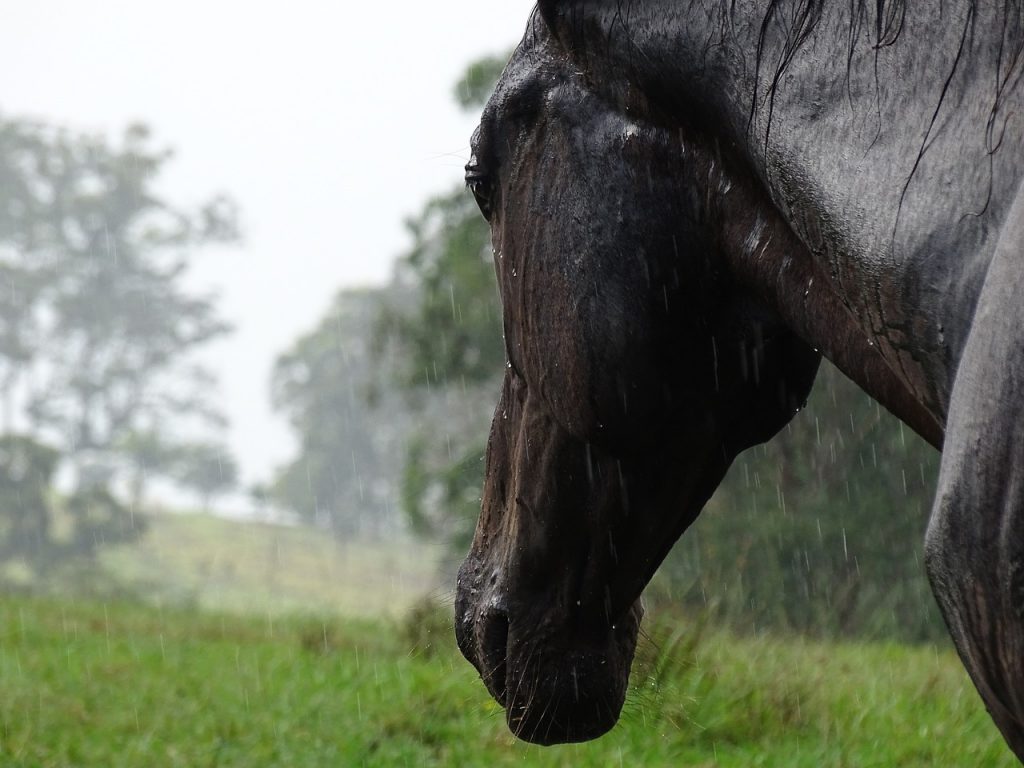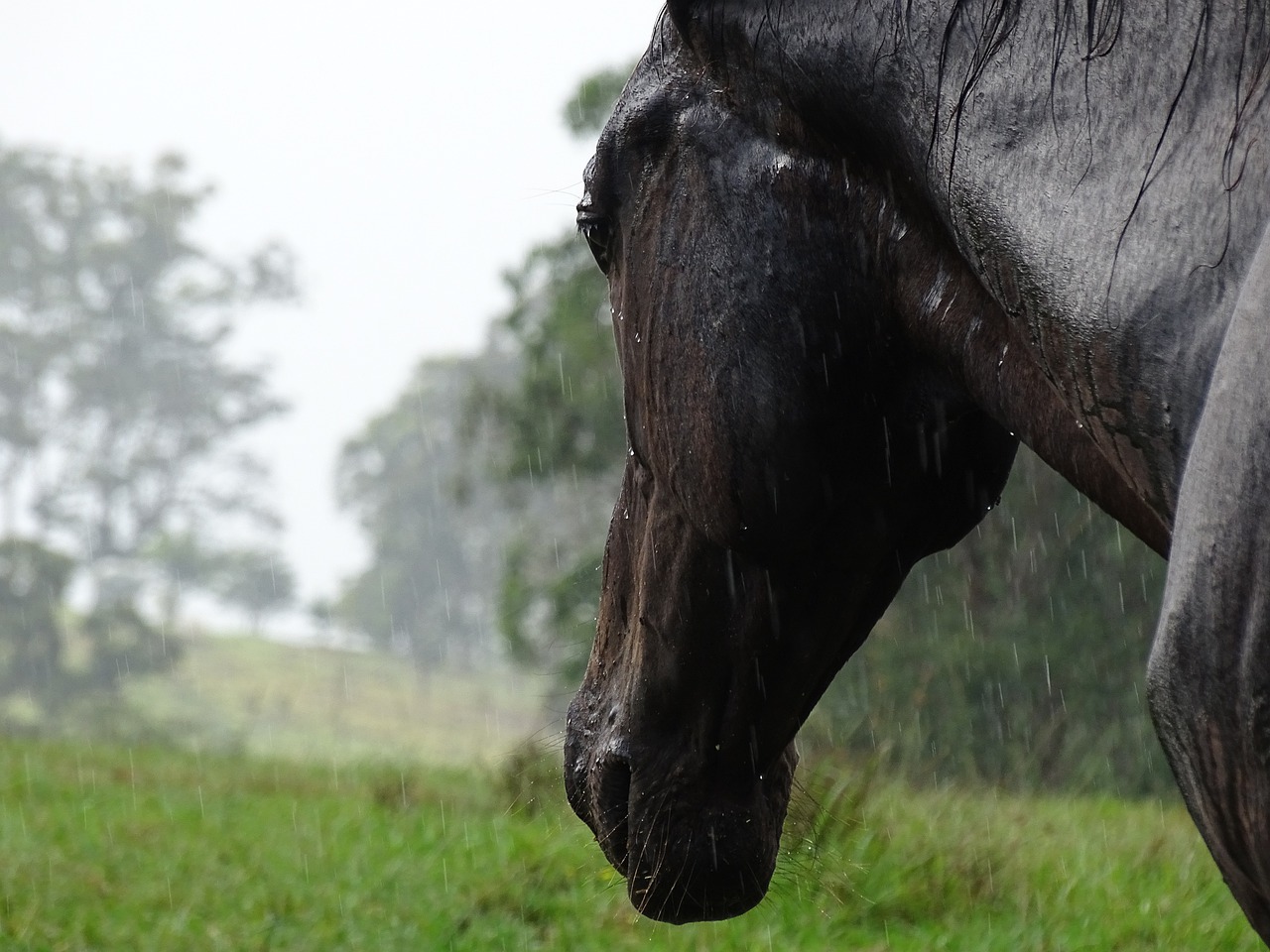Last Updated on February 19, 2022 by Allison Price
A. Rain rot is an equine bacterial skin condition caused by Dermatophilus consgolensis. These scabs are crusty and can cause bare patches on the skin. Rain rot is a disease that affects the areas of the body that are exposed to rain, such as the top, neck, and back. It is rare to occur on the belly or legs. It is most common in areas where high temperatures, humidity, heavy rain, and insects provide ideal conditions for bacteria growth, such as the south of the United States during winter.
The bacteria spores responsible for this disease can’t penetrate the horse’s natural skin barrier. This is unless the horse has been bitten by an insect, suffered a trauma, or the normal protective oil layer on its skin is removed. These events could allow the spores into the outer layers of the skin, where they spread. The horse’s immune system responds to this invasion by producing more white blood cells and proteins. These small pus-filled bumps, known as pustules, accumulate on the skin. These lumps can be felt by running your hands along the horse’s fur.
Each pustule develops and the skin layer underneath it begins to die. These dead skin cells form clumps with the surrounding hairs. They are sometimes called “paintbrush tufts” as they look like tiny paintbrushes. Your horse’s skin might become sensitive or itchy during this time. He may scratch the area further to spread the bacteria.
You may see individual lesions scattered across your horse’s body, or they could coalesce and cover larger areas, leaving large patches of skin bare. The skin beneath the lesions will look reddish and raw after the hair and scabs have fallen off. The skin will heal quickly after the environmental factors that caused it are removed. New hair starts to grow.

Rain rot can also recur if the environment is not addressed. For example, horses that are left outside in the rain without any protection can get it. If it is not treated, it can lead to secondary infections such as Staphylococcal Folliculitis. It can sometimes progress to the point where the horse’s immune system is overwhelmed. Extreme cases can cause severe discomfort, such as fever, vomiting, nausea, and loss of appetite.
Rain rot can often be mistaken for fungal diseases like ringworm. The bacteria is not affected by antifungal medication, so it is important to correctly diagnose the condition. Although a veterinarian can diagnose the condition by culture, most doctors will only be able to identify it clinically.
Rain rot is a common problem in horses that heals spontaneously. Make sure your horse has shelter, such as a shed or lean to if he is often out in rainy weather. Light, breathable sheets can protect your horse from the rain but you should avoid heavy blankets that trap moisture. Wash all his equipment and tack thoroughly. If he has any lesions, stop riding. The saddle can trap sweat and cause discomfort. After bathing him , remove any excess water from his body. Keep him inside until the coat dries completely. Use insect repellent frequently during the buggy season.
These steps will resolve the majority of cases of rain-rot. If your horse continues to have symptoms, your veterinarian may recommend shampoo containing a keratolytic ingredient such as benzoylperoxide. These products can be used to remove dead skin layers, as well as crusty scabs, bacteria, and treat secondary conditions. Systemic antibiotics are not recommended for treating a topic disease such as rain rot. It would not only cause disruption to your horse’s natural micro-ecology, but also lead to the larger problem of antibacterial resistance that can be caused by overuse of antibiotics.
You can cure horse rain rot by taking simple preventative measures and being extra vigilant during rainy periods.
Samuel Hurcombe is a native Australian and studied veterinary medicine at Murdoch University, Perth, before completing his internship. In 2005, he moved to the United States and completed a three-year residency in internal medicine. He then went on to complete a two year critical-care fellowship at The Ohio State University. From 2010 to 2014, he was an assistant professor in equine critical and emergency care at Ohio State. He joined Cornell University’s faculty in July 2014. His research and clinical work focuses on gastroenterology, particularly surgical and medical colic treatment. Dr. Hurcombe holds the American College of Veterinary Internal Medicine and American College of Veterinary Emergency and Critical Care Diplomates.



